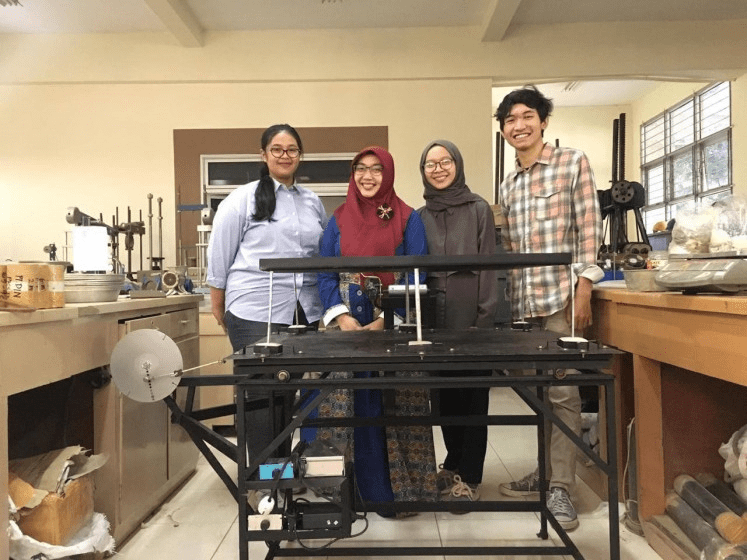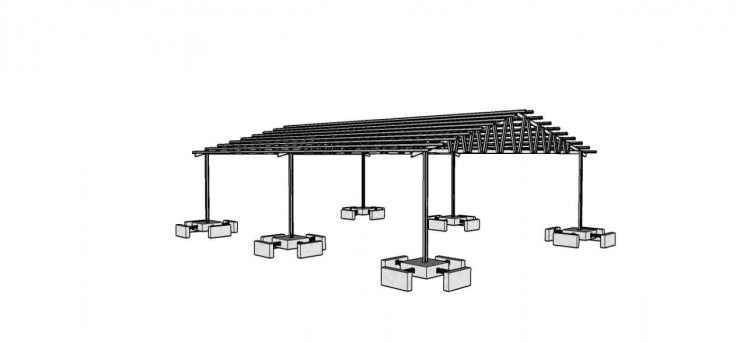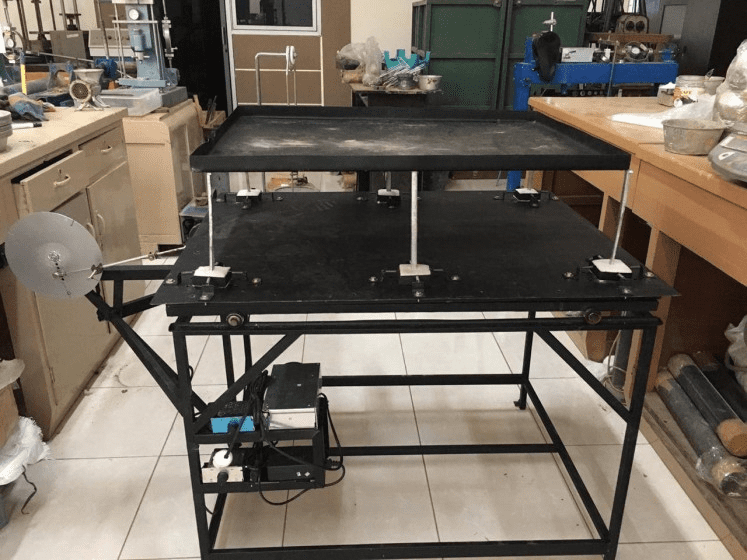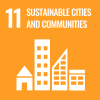Sri Wahyuni from The Jakarta Post
Sat, July 27, 2019 / 01:29 pm

While shock absorbers are a common component of motorbikes, this is not the case with building foundations. However, shock absorbers are exactly what you’ll find in the earthquake-resistant housing foundations invented by a group of three students from Gadjah Mada University’s (UGM) vocational school of civil engineering associate degree program.
Inspired by how shock absorbers work, the three students – Yosi Kristiana, Siti Zuliana and Miftahussurur Rosyadi – created a simple device they called the “spring damper foundation”.

The team from Gadjah Mada University’s vocational engineering school pose in front of their spring damper foundation invention. The team comprises Yosi Kristiana (left), Siti Zuliana (second right) and Miftahussurur Rosyadi (right) while Devi Oktaviana Latif is their supervising lecturer. (Courtesy of PKM UGM/File)
“The idea is to put a simple device inside a building’s foundations to dampen shocks,” Yosi Kristiana, the group leader, said recently.
The analogy was also simple, she said. If a motorbike could resist the burden of its rider and its own body weight and often also the weight of baggage thanks to the shock absorber, then a building must also be able to resist shocks when it has shock absorbers in it, she said. Therefore, the group installed motorbike shock absorbers in the foundations.
“They [the shock absorbers] make the building resistant to earthquakes,” said Yosi, adding that the foundations were suitable for homes in disaster-prone Indonesia because they were relatively cheap, easy to construct and made of simple materials.
According to Miftahussurur, another member of the group, they had made a calculation that for a building measuring 8 meters by 6 m, six units of spring dampers were needed to make the building earthquake-resistant.

If the spring dampers cost Rp 3 million (US$ 214.37) each, then the total cost would be Rp 18 million for the entire foundations. “This includes the entire foundations of the whole building,” Miftahussurur said on Wednesday.
This was more expensive than conventional foundations that are not earthquake-resistant, he said, but less expensive than other earthquake-resistant technologies.
“Base isolation, for example, is very expensive because the materials used are also costly, not to mention its complicated installation,” said Miftahussurur without elaborating further.
A spring damper comprises four connected motorbike shock absorbers planted beneath each pillar of a building at a depth of 50 centimeters.
When an earthquake hits, the shock absorbers reduce the magnitude of the vibrations, thus minimizing the impacts on the building.
The invention, according to Miftahussurur, was designed for transitional shelters (huntrap) for earthquake survivors. The spring damper foundation is also suitable for one-story buildings with light steel structures.
However, with some modification of its dimension, it is also suitable for various other simple buildings, including those with concrete pillars, permanent brick walls and wooden structures.
Devi Oktaviana Latif, the students’ supervising lecturer, said that spring damper foundation had been tested using a simple shaking table. The test showed that the foundation was capable of reducing the vibrations of a 6.0-magnitude earthquake.

“The materials may be simple, but it is strong. It’s ready to resist shocks,” Devi said, adding that the group would continue developing and improving the design in the future.
The invention also saw the group receive a grant from the Research, Technology and Higher Education Ministry’s university student creativity program (PKM) in April.
“We are now waiting for the ministry’s announcement regarding our eligibility to join this year’s national university student science week (PIMNAS),” Miftahussurur said. (mut)



